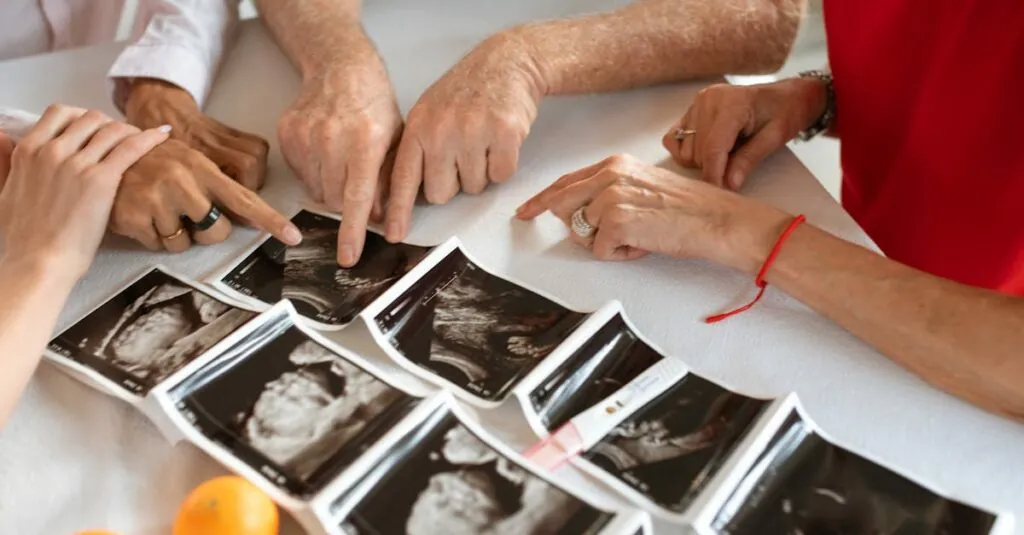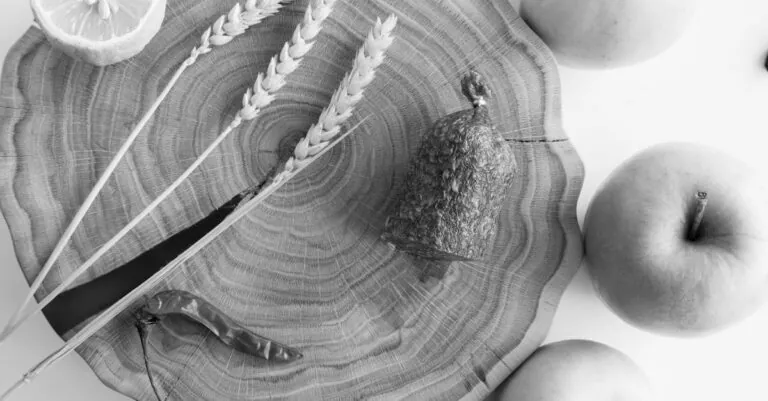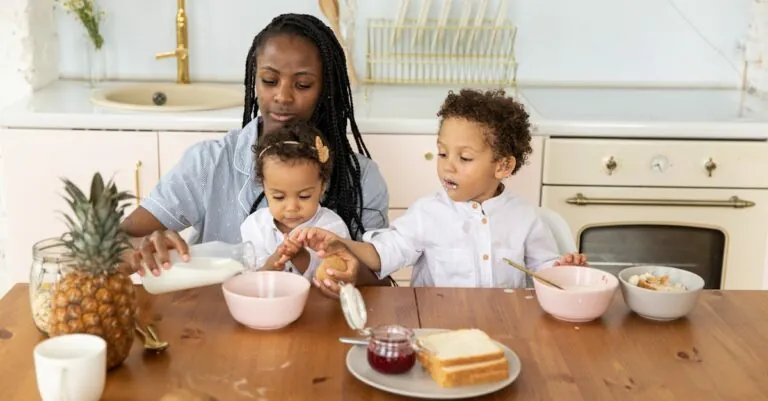Table of Contents
ToggleAs pregnancy progresses, every mom-to-be experiences that magical moment when her baby drops—like a surprise party that everyone’s been waiting for. This delightful shift signals the baby’s readiness for the grand entrance, and it’s a sight worth capturing. Pregnancy baby drop pictures not only showcase this milestone but also reveal the beauty and humor of carrying a tiny human.
Understanding Pregnancy Baby Drop Pictures
The baby drop marks a pivotal moment in pregnancy. This event signifies a shift, as the baby prepares for delivery.
What Is the Baby Drop?
The baby drop occurs when the baby’s head descends into the pelvis. Most often, this happens in the final weeks of pregnancy. It can happen anywhere from two to four weeks before delivery. This position change can provide relief to the mother, easing pressure on the diaphragm and allowing for easier breathing. Many mothers feel increased pressure in the pelvic area as the baby settles lower. Doctors often explain this physical change as a sign that the body is preparing for labor.
Importance of Baby Drop Pictures
Capturing the baby drop through pictures offers a way to celebrate this significant milestone. Expectant mothers often document this experience to reflect on the journey of pregnancy. These images highlight not only the anticipation of birth but also showcase the unique physical changes that occur. Many mothers feel empowered when sharing their experiences online. Photos can also serve as keepsakes for the family, preserving memories of this special moment. Baby drop pictures contribute to a broader narrative of motherhood, connecting mothers with others navigating similar journeys.
Stages of Pregnancy
Pregnancy unfolds in three distinct stages, each marked by unique changes and developments. Understanding these stages helps expectant mothers appreciate their bodies and the journey ahead.
Early Pregnancy Changes
Early pregnancy brings significant hormonal changes. Fatigue often sets in as the body adjusts, while nausea and mood swings become common experiences. Many women notice breast tenderness and heightened sensitivity. During this stage, the uterus begins to expand, preparing for the growing baby. Routine checkups typically occur to monitor both the mother’s and baby’s health.
Mid-Pregnancy Developments
Mid-pregnancy marks a period of noticeable growth. The belly begins to round, often attracting attention and advice from others. Expectant mothers might feel increased energy, alleviating some fatigue. Fetal movement often becomes noticeable, adding excitement to the experience. Routine ultrasounds occur, allowing parents to see their baby and learn about its development.
Late Pregnancy and Baby Drop
Late pregnancy signals the approach of labor as the baby drops into the pelvis. This movement helps relieve previous diaphragm pressure, making breathing easier. Expectant mothers may feel increased pelvic pressure as the baby settles into position. The baby drop indicates readiness for birth, creating both excitement and anxiety. Capturing this milestone through pictures serves as a cherished way to remember this special time.
Types of Baby Drop Pictures
Capturing the baby drop moment can take various forms. Each type offers a unique perspective on this significant phase of pregnancy.
Professional Photography
Professional photography provides high-quality images that beautifully document the baby drop. Photographers with experience in maternity photography understand how to highlight the expectant mother’s emotions and changes in her body. They often use advanced techniques to create stunning portraits, capturing not just the physical but also the emotional essence of the moment. Utilizing natural light and creative angles, these photographs evoke a sense of professionalism and artistry. Many mothers prefer this option for its polished results, turning a meaningful moment into a timeless keepsake.
Candid Moments
Candid moments reveal the authenticity of pregnancy as mothers capture their daily experiences. These spontaneous photos often occur during routine activities or family gatherings, showcasing genuine emotions connected to the baby drop. Friends or family may snap pictures without any formal posing involved, leading to raw and memorable shots. These images resonate with sincerity, reflecting the excitement and anticipation of welcoming a new family member. Many expectant mothers appreciate these candid captures since they convey personal stories that professional shots sometimes miss.
Tips for Capturing Pregnancy Baby Drop Pictures
Capturing the moment when a baby drops is essential for expectant mothers. This special milestone deserves attention to detail.
Best Times for Photos
Timing matters greatly for stunning pregnancy baby drop pictures. Aim for late afternoon or early evening, as natural light creates soft, flattering effects. Consider capturing images in the final weeks of pregnancy, when the baby’s drop is most evident. This period usually falls between 34 and 38 weeks. Not only does lighting enhance the visuals, but it also highlights the beauty of the moment. Don’t forget to take spontaneous photos during daily activities, showcasing real-life connections between mother and baby.
Ideal Locations and Settings
Choosing the right location adds depth to pregnancy baby drop pictures. Home settings often provide comfort, allowing mothers to relax and showcase their natural beauty. A nursery filled with baby items conveys anticipation and excitement. Outdoor environments, like parks or gardens, offer vibrant backgrounds that complement the pregnancy journey. Urban landscapes can add a modern touch, highlighting daily life. Consider personal spaces that reflect individual stories, emphasizing creativity and unique experiences. Each chosen setting influences the overall feel and connection of the images.
Sharing Pregnancy Baby Drop Pictures
Sharing pregnancy baby drop pictures allows mothers to celebrate this unique milestone. These images create connections with others experiencing similar journeys, fostering a sense of community.
Social Media Platforms
Expectant mothers commonly share their baby drop pictures on social media platforms like Instagram, Facebook, and Pinterest. These platforms enable users to showcase their experiences and connect with other parents. Utilizing hashtags such as #BabyDrop or #PregnancyJourney enhances visibility, allowing more individuals to find and engage with the content. Sharing moments in the form of stories or posts invites supportive comments and encouragement, creating an uplifting environment for discussions around pregnancy.
Creating Memory Albums
Creating memory albums serves to cherish and preserve the moments leading up to childbirth. Mothers can compile their favorite baby drop pictures alongside images from earlier stages of pregnancy. Organizing the album chronologically offers a visual narrative of their journey. Including handwritten notes or captions adds a personal touch, capturing emotions and thoughts during each phase. Memory albums become treasured keepsakes, allowing families to revisit these experiences for years to come.
Pregnancy baby drop pictures represent more than just a milestone; they capture the emotional journey of motherhood. Each image tells a story of anticipation and excitement as the due date approaches. By documenting this unique experience, mothers can reflect on their growth and the changes their bodies undergo.
Sharing these moments on social media fosters connection and support among expectant mothers. It creates a community where experiences are celebrated and shared. Whether through professional photos or candid snapshots, these images become cherished keepsakes that families will treasure for years. Embracing this special time and capturing it through photography allows mothers to appreciate their journey and the beautiful life ahead.








